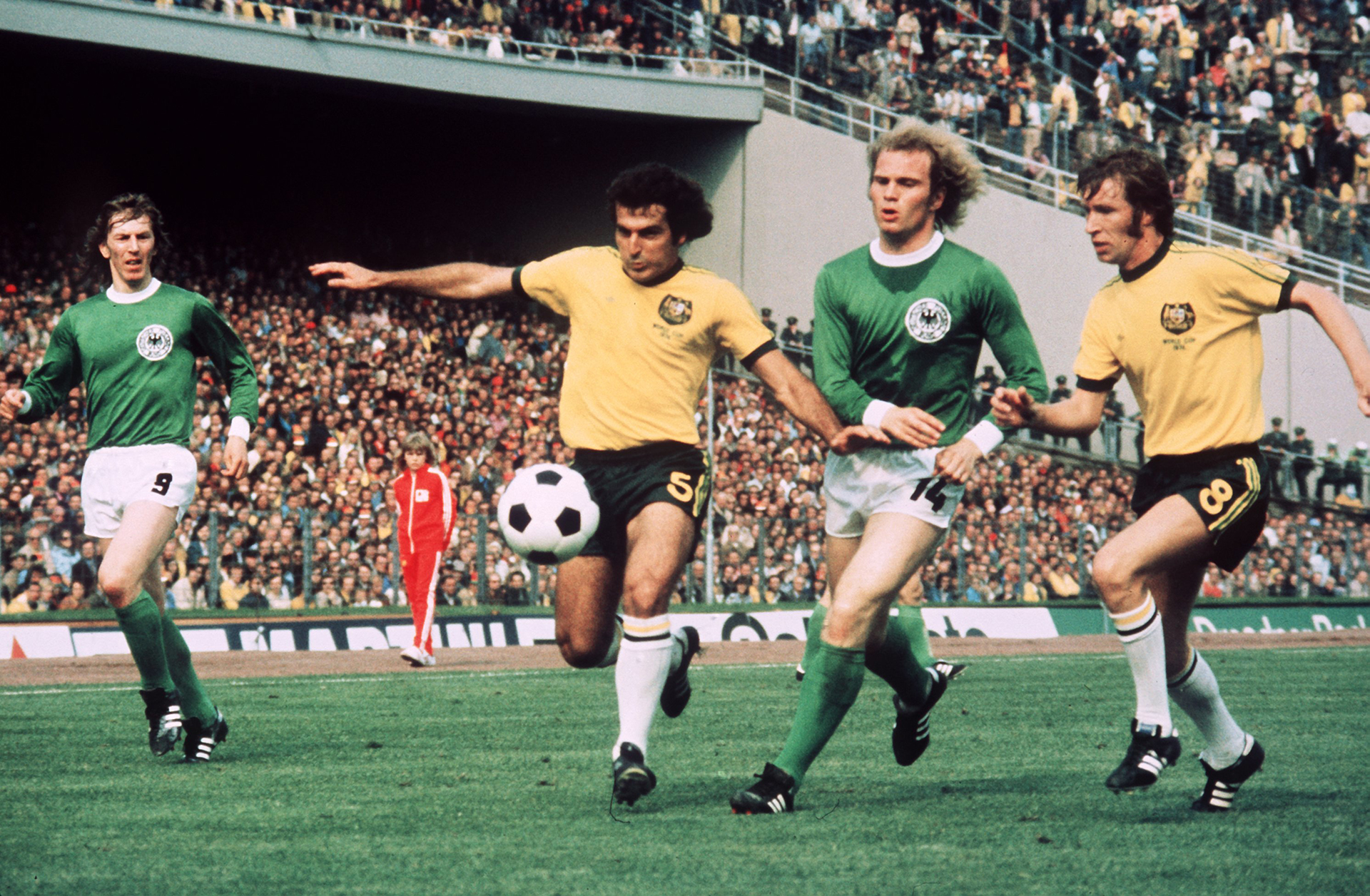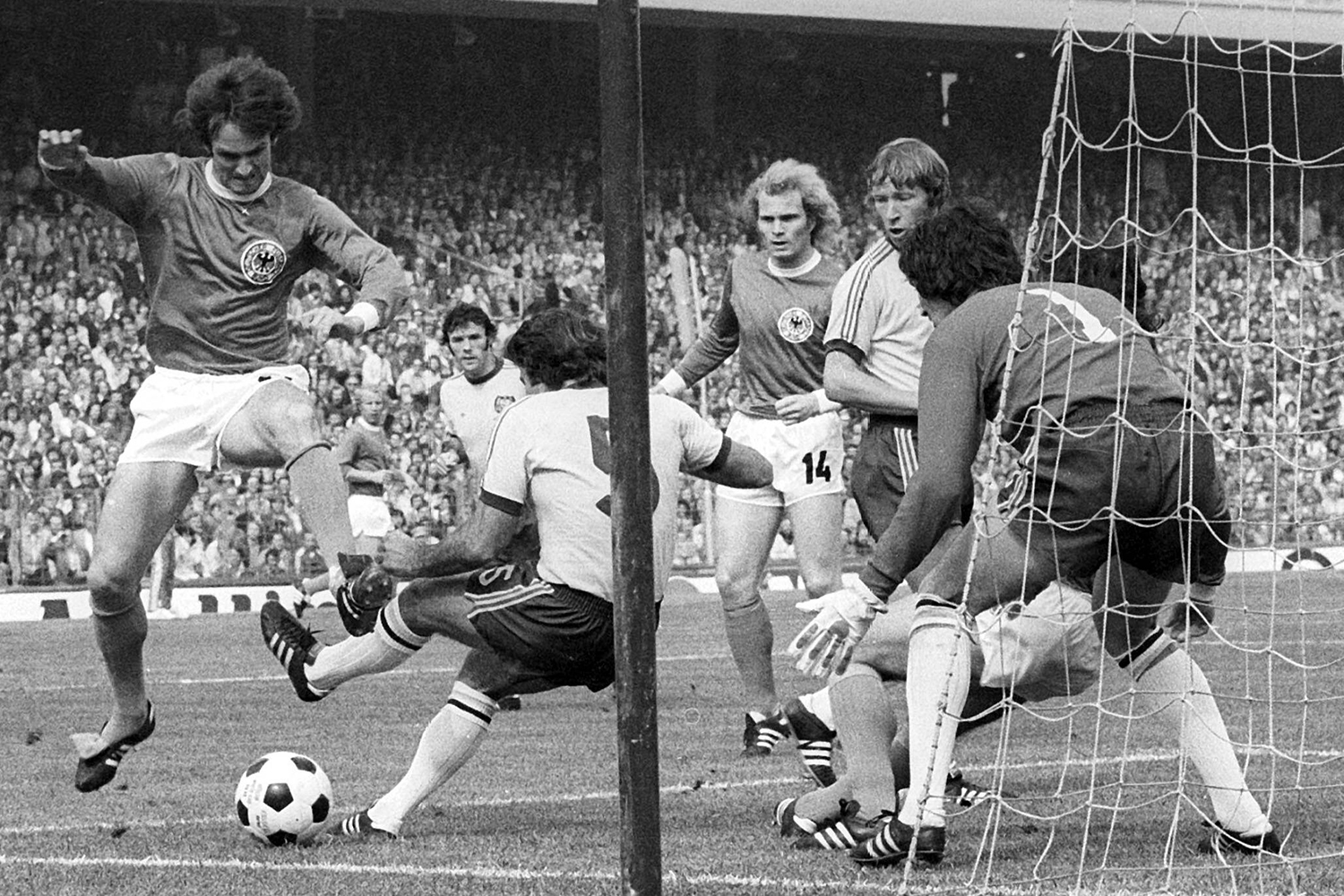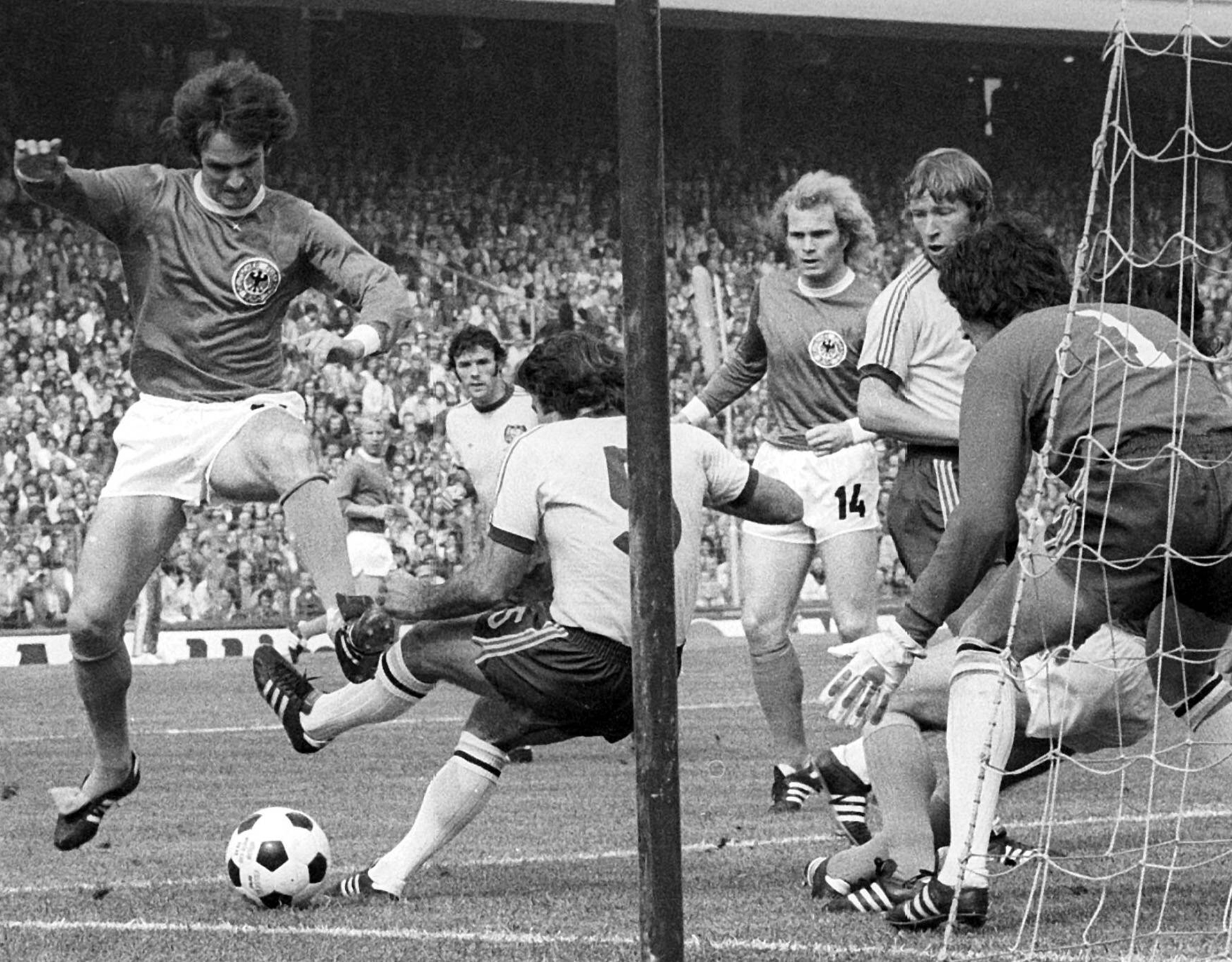Col Curran, the former Socceroo defender, was one of the most complete players ever to wear a green and gold shirt.
Curran could play either fullback position because he was adept with both feet.
He was one of the first players in Australia to assume the modern wing back role as he was able to forge down the flanks with penetrating overlapping runs and provide pinpoint crosses to his strikers.
He also had a venomous shot on both feet.
In 1965, at the age of sixteen, Curran travelled to Manchester United by ship to team up with his Adamstown teammate, Ray Baartz
When the legendary United manager, Matt Busby, heard Curran had paid his own fare to England, he told him he could stay as long as he wanted.
Ultimately, Curran was offered a twelve month contract by Busby but turned it down and returned to Australia not long after.
It was a decision he regretted for some years but when he received recognition from Rale Rasic to be part of the world tour for the Socceroos in 1970, his life changed forever.
In total, Curran played 34 times for the Socceroos in an international career which spanned from 1970-1979.
In this interview with Roger Sleeman, Col Curran addresses the emotions of 1974 World Cup qualification, the events leading up to the World Cup matches, the clashes with East Germany, West Germany and Chile and lessons learned from the World Cup qualification.
ROGER SLEEMAN
At what point in time did the reality of qualifying for the World Cup Finals really register with you?
COL CURRAN
Straight after the whistle blew in Hong Kong on November 13th, 1973 when we defeated South Korea to qualify.
Everyone was elated and we celebrated all night.
RS: What was your reaction to the draw made in January, 1974 pitting Australia against the two German teams and Chile?
CC: The first reaction was, we had no chance which was highlighted a fortnight before the World Cup when West Germany beat Austria 6-1 in a friendly. However, thinking practically, we realised the opponents had two arms and legs like us and if we fought for each other on the pitch, we could try and achieve acceptable results.
RS: From the time the squad qualified in November, 1973 was the preparation sufficient up to the Finals?
CC: I think it was but training and running was a key part of it. However, we could’ve played against better opposition if it had been available. Rale Rasic had tried to arrange more lead up matches but most countries had calendars booked up for several years.
In the end we had to settle for friendly internationals against Uruguay, Indonesia and Israel ,three friendlies in Australia and three friendlies against Swiss club sides on the way to Germany.

RS: What were the conditions like in the Hamburg complex?
CC: I couldn’t believe my eyes as we were based at the headquarters of Hamburg SV which had about six or seven full size football pitches, twenty two room hotel, tennis courts and swimming pool. There were also a large contingent of soldiers and guard dogs following the Munich Olympics tragedy who went everywhere with us.
RS: What was the spirit like in the camp?
CC: The spirit was great , particularly after Ray Baartz joined the team, and we were a tight knit group of players who all acknowledged his contribution to our qualification. On the pitch we did everything for each other and Baartz’s presence definitely lifted our morale. Despite the sense of reality we were entering a slaughterhouse in our group, the spirit remained high.
RS: What were the expectations before the first match against East Germany, and was there a game plan?
CC: Rale Rasic had observed their gymnasium training and described how fit they were and how advanced their training methods were. Our biggest concern was, could we keep up with them physically so the game plan was to mark tightly their key players (Jurgen) Sparwasser and (Joachim) Streich and try and limit their opportunities.
RS: Describe your most lasting memories of the East German clash, and did the team perform to the best of its ability?
CC: The East German’s ability on the ball, the space they created with their runs off the ball, the total understanding of each other’s game and the speed they came out of the back to launch attacks remain clearly in my memory.
I believe we did perform very well and if we could’ve played them again, it would’ve been a much closer game because apart from their high fitness levels, we didn’t know a lot about their tactical football. In the end the 2-0 loss was a respectable score , especially in view of their 1-0 defeat of West Germany in the group stage.

RS: What were your emotions before the West German match, and who did you rate as the best opponents on the day?
CC: After all the publicity they’d received, I was shaking in my boots knowing they could win the tournament. I’d never been so nervous in my life as they all looked so tall and strong, e.g. Uli Hoeness wore a size seventeen boot with legs like tree trunks and the speed of a hare.
Both the fullbacks (Paul) Breitner and (Berti) Vogts were so strong, fast, skilful and precise. Every time we closed them down, they had an outlet and started all over again. They always had three or four players in support to offload the ball.
(Franz) Beckenbauer was just a genius who controlled everything at the back and just seemed to have all day to play with the time and space he created for himself. (Wolfgang) Overath was a magnificent midfielder who dominated the centre of the park and his early goal from 22 metres gave our keeper, Jack Reilly, no chance to save.
We couldn’t commit ourselves because they could destroy you. Critically, we’d never played against teams like this. Furthermore, we couldn’t pressure them in any way because they were superior to us technically and tactically.
However, the crowd appreciated our determination as part time players and the final 3-0 scoreline was more than respectable because there’d been predicted scores of 10-0 bandied around before the match.
RS: In hindsight, do you regard that West German side as one of the greatest to ever appear in the World Cup?
CC: Definitely, and they could’ve played two squads.
RS: Should the Socceroos have beaten Chile in the third match?
CC: I thought we were going to beat them as we held them well in the first half before the rain downfall at half time which helped our game in the second half. We had the upper hand in the first part of the second half and I remember crossing the ball to Jimmy Mackay who volleyed the ball down but it just bounced over the bar.
We also had a few other chances but when Ray Richards was dismissed late in the match with a second yellow card, our luck had all but run out so we had to settle for the 0-0 draw.

RS: How much was Ray Baartz missed?
CC: Immensely, and this question was always asked by supporters. He could hit a ball from anywhere with that element of surprise like the goal he scored in the second half against Uruguay on April 27th before the World Cup Finals. Baartz’s absence upset Rale Rasic’s team strategy and the players’ plans.
RS: Were their other players who may have been considered for selection in the Socceroo squad like Terry Butler from Apia?
CC: I think Terry would’ve added a lot to the squad with his runs down the left side and there was also squad player, Garry Manuel, the old fashioned centre forward with incredible speed and toughness. Also in the squad , David Harding was the equal of the other midfielders and John Watkiss who could’ve played in defence or midfield and performed with ease.
I watched John Watkiss as a kid when he was seventeen years old playing first grade with Canterbury in NSW Federation competition and he was a special player. The other player was John Doyle who played with me at Adamstown and went on the world tour in 1970. John was an amazing athlete with all the technical skill.
Squad member, Harry Williams, may have received longer game time if the opportunity had presented itself.
RS: What were the lessons learned from the tournament for Australian football?
CC: Some players left at home should’ve been considered for the squad and a few others in the squad who didn’t play, could have been given the chance.
Also, despite our respectable performances, the clear message was that part time footballers couldn’t match it with world class players so full-time professional football was the only way the national team could compete at the highest level.

